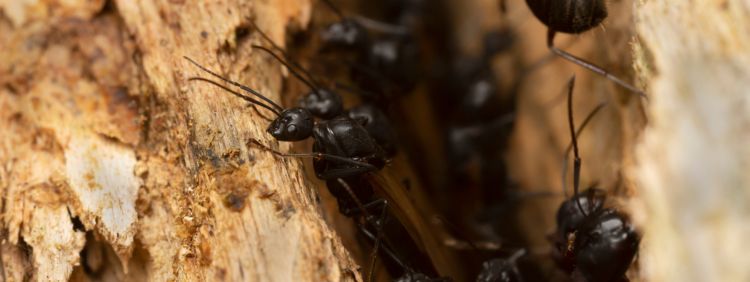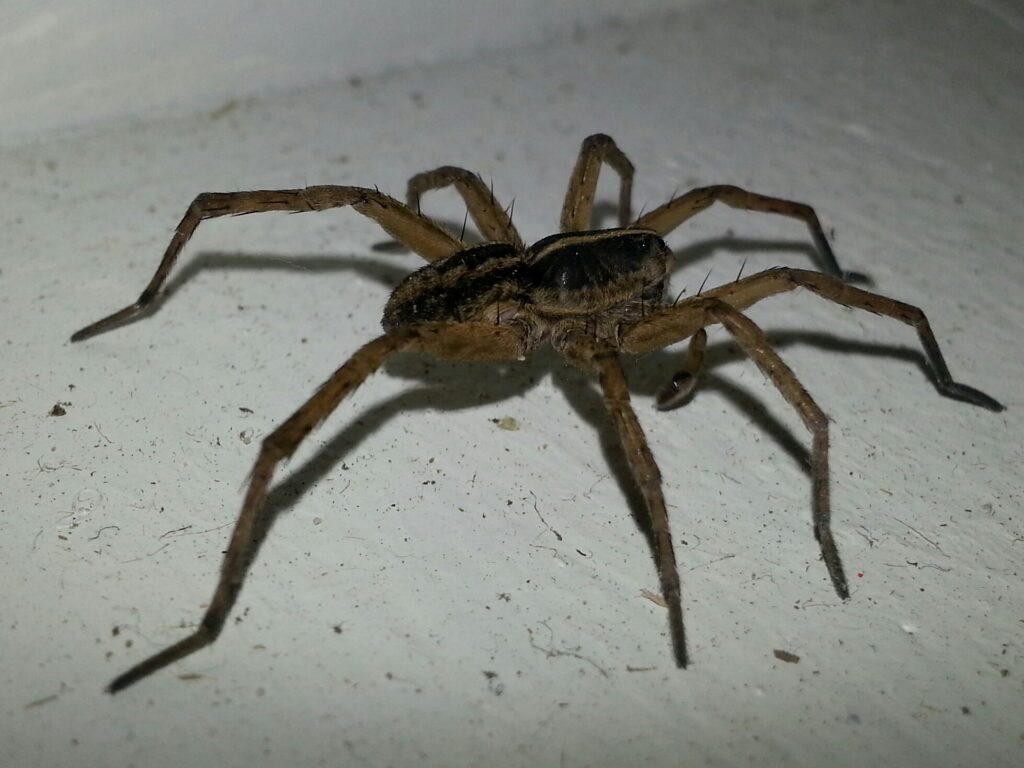 While a carpenter ant may seem no more than a dot amidst our busy lives, its behaviour can unlock insights into nature's forces. But what happens when the sweltering summer heat or the biting winter cold sets in? Here's where the story gets fascinating.
How does temperature affect ants? As temperatures rise, carpenter ants become more active, often venturing indoors in search of food, while cooler temperatures can push them to seek shelter inside structures. Understanding the impact of weather on carpenter ants not only aids in effective pest control but also solves the mystery of the sudden appearance of ants in your kitchen.
Throughout this exploration, we'll look deep into identifying these unsettling guests, learning when to call on expert friends like Truly Nolen Southwestern for professional help, and understanding how to get rid of ants in your kitchen before they build an alliance with other household pests. Let's demystify these tiny housemates and restore peace to your home environment.
While a carpenter ant may seem no more than a dot amidst our busy lives, its behaviour can unlock insights into nature's forces. But what happens when the sweltering summer heat or the biting winter cold sets in? Here's where the story gets fascinating.
How does temperature affect ants? As temperatures rise, carpenter ants become more active, often venturing indoors in search of food, while cooler temperatures can push them to seek shelter inside structures. Understanding the impact of weather on carpenter ants not only aids in effective pest control but also solves the mystery of the sudden appearance of ants in your kitchen.
Throughout this exploration, we'll look deep into identifying these unsettling guests, learning when to call on expert friends like Truly Nolen Southwestern for professional help, and understanding how to get rid of ants in your kitchen before they build an alliance with other household pests. Let's demystify these tiny housemates and restore peace to your home environment.
Warm Weather And Carpenter Ant Activity
As spring unfolds and ushers in warmer days, it's not just flowers and trees that respond to the rising temperatures. Carpenter ants, too, become especially lively, embarking on their quest for sustenance far and wide. With the mercury climbing, these ants intensify their search for accessible food sources, often leading them to explore your living spaces. In their fervent activity, they also hunt for suitable sites to set up new residences, driven by the changing season. An intriguing phenomenon accompanying the warm months is the swarming of carpenter ants. This event is marked by a flurry of winged individuals leaving the safety of their home nests to engage in mating rituals. Once successful, these winged ants will establish colonies elsewhere, marking the beginning of new ant settlements. This behaviour, orchestrated by temperature fluctuations, highlights their adaptive strategies and intricate life cycles. As we unravel the intricacies of carpenter ant behaviour, it's evident that the transition to warmer periods not only stirs their wanderlust but also dictates significant stages in their lifecycle.Moisture And Rainfall's Impact On Carpenter Ants
When heavy rainfall and elevated humidity levels become a staple of the season, they create the perfect playground for carpenter ants. These conditions often lead to damp, rotting wood, which irresistibly lures these industrious insects, ready to set up their operations. It’s fascinating to see just how pivotal moisture is in deciding where carpenter ants make their presence known. During wet weather, this attraction to moist wood becomes even more pronounced. Carpenter ants might breach your home in a quest for saturated timbers, setting up shop in vulnerable spots like basements, window frames, or rooftops. Before you know it, what seemed like a harmless drizzle has become the catalyst for an entire family setting up residence within your walls. Understanding this connection between hydration and habitation can go a long way in diagnosing the sudden spike in ant activity. By proactively addressing damp areas in your living space, you can prevent these tiny architects from causing major structural annoyance. Keeping an eye on both rainfall patterns and humidity might just be the secret to maintaining peace, both indoors and out.Cold Weather and Winter Behavior
 As the golden hues of autumn fade and winter sets in, the once-busy bustle of carpenter ants quietly diminishes. With temperatures dropping, these hardy insects significantly reduce their activity and may even become dormant. In colder climates, their survival strategies are keenly tuned to the chilling change, giving us insights into how they endure the cold snaps year after year.
Adaptability is the name of the game when it comes to winter survival. Rather than braving the freezing outdoors, carpenter ants opt for warmth and insulation, often moving indoors to hibernate. They seek refuge in cozy, unnoticed areas such as inside walls, attics, or nestled near heating systems. This seasonal migration might lead them to share space with humans, ironically seeking comfort where people least expect it.
Recognizing these shifts can make all the difference. By acknowledging their clever ways of staying warm, homeowners can better prepare and potentially prevent these ants from setting up camp in their living quarters.
As the golden hues of autumn fade and winter sets in, the once-busy bustle of carpenter ants quietly diminishes. With temperatures dropping, these hardy insects significantly reduce their activity and may even become dormant. In colder climates, their survival strategies are keenly tuned to the chilling change, giving us insights into how they endure the cold snaps year after year.
Adaptability is the name of the game when it comes to winter survival. Rather than braving the freezing outdoors, carpenter ants opt for warmth and insulation, often moving indoors to hibernate. They seek refuge in cozy, unnoticed areas such as inside walls, attics, or nestled near heating systems. This seasonal migration might lead them to share space with humans, ironically seeking comfort where people least expect it.
Recognizing these shifts can make all the difference. By acknowledging their clever ways of staying warm, homeowners can better prepare and potentially prevent these ants from setting up camp in their living quarters.
Seasonal Changes and Nest Expansion
As the chill of winter slows and spring brings warmer days, the lively crew of carpenter ants returns to work, resuming their ambitious nesting and colony expansion efforts. Throughout this seasonal change, both indoor and outdoor ant activity become noticeably pronounced. This reconvening of their industrious work stems from the need to establish new colonies, find food, and perpetuate their species. Conversationally speaking, you might find these efforts lead to unanticipated guests scurrying through your kitchen or exploring the corners of your garage. It’s like they have stepped on the gas pedal the moment temperatures start to rise, searching a little more fervently for those sweet, easy meals and cozy, hidden shelters. Unseasonable warmth can magnify this behaviour, prompting them to wander further afield, while cooler spells may temporarily slow them, only to spur a renewed vigour once the warmth returns.Preventive Measures For Weather-Related Carpenter Ant Activity
Effective weatherproofing of your home serves as the first line of defence against carpenter ant invasions during both warm and cold seasons. By sealing entry points and managing moisture-related issues, you can create a less inviting environment for these unwelcome guests. Applying preventive measures helps in reducing the potential impact of seasonal patterns on ant behaviour, ensuring your living space remains undisturbed.- Seal Cracks and Crevices: Examining your home's exterior for visible cracks or openings is crucial. Use caulk or other appropriate sealants to close gaps around windows, doors, and the foundation. This action prevents ants from finding hidden entryways into your home.
- Weather-Stripping Doors and Windows: To block ants from sneaking in through gaps, install or replace weather-stripping around doors and windows. This step not only prevents ant entry but also enhances the insulation of your home during extreme temperatures.
- Repairing Damaged Screens: Ensuring that window and door screens are intact and free of holes deters ants from entering. If you notice damage, promptly repair or replace the screens as part of regular home maintenance.
- Addressing Leaks: Fix any leaks in plumbing, roofs, or walls to eliminate sources of excess moisture. A dry environment deters ants from setting up residence, as they are typically drawn to damp areas after rain.
- Improving Drainage: Ensure that the landscape around your home directs water away from the foundation. Gutters should be clean and downspouts should channel water away to mitigate moisture issues that can attract ants to your property.

